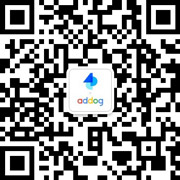
本案例默认翻译为中文,点击可切换回原语言
已切换成原语言,点击可翻译成中文
向前支付
案例简介:背景 最大的问题是那些面临无家可归者出售的英国杂志,作为乞讨的替代。曾经被认为是消除贫困的彻底解决方案,这个大问题的商业模式现在正努力在一个日益数字化的世界中发展。 随着一代人靠免费内容长大,英国杂志业正在迅速衰落。作为出版业中最脆弱的人,这对大问题供应商有可怕的后果。 与此同时,近年来,无现金社会迅速崛起 (现金支付在过去10年中减半),使得街头小贩越来越难以谋生。供应商已经进一步脱离金融系统,现在正在争夺不断减少的现金池。 我们的目标有两个方面: 重新点燃对杂志的兴趣,并在日益无现金的社会中应对街头贩卖的挑战。 描述创意 向前支付已经改变了大问题的销售方式; 通过引入移动支付,我们创建了世界上第一个可转售的杂志。每个杂志都有自己的可扫描二维码,所以一旦买家读完他们的杂志,他们就不会把它放在里面,而是把它卖掉。每本杂志可以多次转售,利润一次又一次地返还给供应商。每个买家都成为潜在的卖家,每个供应商都成为创业链的负责人。 通过采用移动支付,最大的问题是减少对现金的依赖,最大化每笔销售,并通过规避供应商的物理限制获得更大的影响力。 为了让这种商业模式发挥作用,我们必须解决供应商面临的最大问题之一: 进入银行账户。因此,我们与Monzo合作,作为该计划的一部分,供应商可以开立自己的个人银行账户。 描述策略 大问题业务建立在以个人为中心的模型上; 因此,我们的研究需要从供应商开始。通过对供应商和买家的多次采访,我们发现了一个关键的受众洞察力: 大问题买家不仅仅是杂志的读者,他们还是大问题使命的直言不讳的冠军。供应商依靠一小部分忠实的读者。 对慈善捐赠背后行为科学的理解确立了这群倡导者所拥有的力量。“给予” 本质上是一种社会行为 -- 如果他们认识的人要求捐赠,人们会给予更多的事业,如果他们知道别人在他们之前捐赠过,他们更有可能捐赠。所以我们很快就找到了我们的解决方案: 把买家变成卖家。通过利用QR码,我们能够授权我们现有的倡导者,让他们在杂志的销售和发行中发挥积极作用。 描述执行 4月1日,Pay It Forward计划作为试点计划与英国各地的供应商一起启动。每个供应商都提供: 包含个人头像和独特QR码的贴纸,解释激活的腹部带和个人Monzo银行账户。 当有人扫描二维码时,他们会被发送到定制的monzo。me页面包含供应商的简短简历和照片以及付款选项 (买家可以选择他们想为杂志支付多少,最低2.50英镑)。然后在供应商和大问题之间分摊付款。Monzo.me使付款尽可能轻松,不需要账号或分类代码,也不要求买方拥有自己的Monzo银行账户。 为了发起这项倡议并使其闻名世界,我们召集了许多名人,包括加里 · 林卡尔和艾玛 · 邦顿。名人都买了现在流通的杂志。 我们获得了主要新闻媒体的报道,包括英国广播公司伦敦、太阳报、晚报和在线邮件,获得了9350万的印象。 列出结果 点对点模式增加了供应商的覆盖面,降低了他们对现金交易的依赖。这导致参与供应商的每周销售额增加了15%。最成功的供应商平均每周增长69%。供应商可以花更少的时间销售,更多的时间受益于大问题提供的培训。 如果最大的问题是在他们的整个组织中扩展该计划,并且每本杂志被转售一次,这将意味着年收入增加1000万英镑。 多亏了scheme,大问题又回到了公众的意识中 -- 收到了超过9300万种印象。 作为我们竞选的直接结果,monzo已经改变了他们的商业模式,允许没有固定地址的供应商开立银行账户-这是释放金融包容性的关键-没有一个你不能出租,谋生或有效储蓄。
向前支付
案例简介:Background The Big Issue is a UK magazine sold by those facing homelessness, as an alternative to begging. Once considered a radical solution to dismantling poverty, The Big Issue’s business model is now struggling to evolve in an increasingly digital world. With a generation raised on free content, the UK magazine industry is in rapid decline. As the most vulnerable people in the publishing industry, this has dire consequences for Big Issue vendors. Simultaneously, recent years have seen the rapid rise of a cashless society (cash payments have halved over the past 10 years), making it increasingly difficult for street vendors to earn a living. Vendors have become further isolated from the financial system and are now vying for a decreasing pool of cash. Our objectives were two-fold: reignite interest in the magazine and tackle the challenges of street vending in an increasingly cashless society. Describe the creative idea Pay It Forward has transformed the way the Big Issue is sold; by introducing mobile payments we created the world’s first resellable magazine. Each magazine is provided with its own scannable QR code so once buyers have finished reading their magazine, they don’t bin it, they sell it on. Each magazine can be resold multiple times, with the profits returning to the vendor time and again. Every buyer becomes a potential seller and every vendor becomes the head of an entrepreneurial chain. By adopting mobile payments, the Big Issue is less reliant on cash, maximises every sale and gains greater reach by circumventing the physical limitations of the vendors. For this business model to work, we had to solve one of the biggest problems facing vendors: access to a bank account. So, we partnered with Monzo and as part of the scheme, vendors can open their own personal bank accounts. Describe the strategy The Big Issue business is built on an individual-centric model; therefore our research needed to start with the vendors. Through multiple interviews with vendors and buyers, we unearthed a key audience insight: Big Issue buyers aren’t just readers of the magazine, they are vocal champions of the Big Issue mission. The vendors rely on a small pool of loyal readers. An understanding of the behavioural science behind charitable giving established the power this group of advocates possess. “Giving” is essentially a social act - people give significantly more to causes if asked to donate by someone they know and are more likely to donate if they know someone else has donated before them. So we soon landed on our solution: turn buyers into sellers. By utilising QR codes, we were able to empower our existing advocates, giving them an active role in the sale and distribution of the magazine. Describe the execution The Pay It Forward initiative launched as a pilot scheme with vendors across the UK on 1st April. Each vendor was provided with: stickers containing the individual’s avatar and a distinct QR code, belly bands explaining the activation and a personal Monzo bank account. When someone scans the QR code, they’re sent to a customised monzo.me page containing the vendor’s short bio and photo and the payment option (buyers can choose how much they want to pay for the magazine, £2.50 being the minimum). The payment is then split between the vendor and The Big Issue. Monzo.me makes the payment as effortless as possible, there’s no need for account numbers or sort codes and it doesn’t require the buyer to have their own Monzo bank account. To launch the initiative and make it world-famous, we called upon a host of celebrities, including Gary Linekar and Emma Bunton. The celebrities all bought copies of the magazine which are now in general circulation. We secured coverage across major news outlets, including BBC London, The Sun, The Evening Standard and Mail Online, achieving 93.5 million impressions. List the results The peer-to-peer model has increased the vendor’s reach and made them less reliant on cash transactions. This has resulted in an increase of 15% across participating vendor’s weekly sales. With the most successful vendor seeing an average weekly increase of 69%. Vendors can spend less time selling and more time benefitting from the training provided by The Big Issue. If the Big Issue were to scale the initiative across their entire organisation and each magazine were resold once, this would mean an annual revenue increase of £10m. Thanks to scheme, the Big Issue is back in the public’s consciousness – receiving over 93 million impressions. As a direct result of our campaign, Monzo have transformed their business model to allow for vendors without a fixed address to open bank accounts - this is key to unlocking financial inclusivity – without one you can’t rent, earn a living or effectively save.
Pay It Forward
案例简介:背景 最大的问题是那些面临无家可归者出售的英国杂志,作为乞讨的替代。曾经被认为是消除贫困的彻底解决方案,这个大问题的商业模式现在正努力在一个日益数字化的世界中发展。 随着一代人靠免费内容长大,英国杂志业正在迅速衰落。作为出版业中最脆弱的人,这对大问题供应商有可怕的后果。 与此同时,近年来,无现金社会迅速崛起 (现金支付在过去10年中减半),使得街头小贩越来越难以谋生。供应商已经进一步脱离金融系统,现在正在争夺不断减少的现金池。 我们的目标有两个方面: 重新点燃对杂志的兴趣,并在日益无现金的社会中应对街头贩卖的挑战。 描述创意 向前支付已经改变了大问题的销售方式; 通过引入移动支付,我们创建了世界上第一个可转售的杂志。每个杂志都有自己的可扫描二维码,所以一旦买家读完他们的杂志,他们就不会把它放在里面,而是把它卖掉。每本杂志可以多次转售,利润一次又一次地返还给供应商。每个买家都成为潜在的卖家,每个供应商都成为创业链的负责人。 通过采用移动支付,最大的问题是减少对现金的依赖,最大化每笔销售,并通过规避供应商的物理限制获得更大的影响力。 为了让这种商业模式发挥作用,我们必须解决供应商面临的最大问题之一: 进入银行账户。因此,我们与Monzo合作,作为该计划的一部分,供应商可以开立自己的个人银行账户。 描述策略 大问题业务建立在以个人为中心的模型上; 因此,我们的研究需要从供应商开始。通过对供应商和买家的多次采访,我们发现了一个关键的受众洞察力: 大问题买家不仅仅是杂志的读者,他们还是大问题使命的直言不讳的冠军。供应商依靠一小部分忠实的读者。 对慈善捐赠背后行为科学的理解确立了这群倡导者所拥有的力量。“给予” 本质上是一种社会行为 -- 如果他们认识的人要求捐赠,人们会给予更多的事业,如果他们知道别人在他们之前捐赠过,他们更有可能捐赠。所以我们很快就找到了我们的解决方案: 把买家变成卖家。通过利用QR码,我们能够授权我们现有的倡导者,让他们在杂志的销售和发行中发挥积极作用。 描述执行 4月1日,Pay It Forward计划作为试点计划与英国各地的供应商一起启动。每个供应商都提供: 包含个人头像和独特QR码的贴纸,解释激活的腹部带和个人Monzo银行账户。 当有人扫描二维码时,他们会被发送到定制的monzo。me页面包含供应商的简短简历和照片以及付款选项 (买家可以选择他们想为杂志支付多少,最低2.50英镑)。然后在供应商和大问题之间分摊付款。Monzo.me使付款尽可能轻松,不需要账号或分类代码,也不要求买方拥有自己的Monzo银行账户。 为了发起这项倡议并使其闻名世界,我们召集了许多名人,包括加里 · 林卡尔和艾玛 · 邦顿。名人都买了现在流通的杂志。 我们获得了主要新闻媒体的报道,包括英国广播公司伦敦、太阳报、晚报和在线邮件,获得了9350万的印象。 列出结果 点对点模式增加了供应商的覆盖面,降低了他们对现金交易的依赖。这导致参与供应商的每周销售额增加了15%。最成功的供应商平均每周增长69%。供应商可以花更少的时间销售,更多的时间受益于大问题提供的培训。 如果最大的问题是在他们的整个组织中扩展该计划,并且每本杂志被转售一次,这将意味着年收入增加1000万英镑。 多亏了scheme,大问题又回到了公众的意识中 -- 收到了超过9300万种印象。 作为我们竞选的直接结果,monzo已经改变了他们的商业模式,允许没有固定地址的供应商开立银行账户-这是释放金融包容性的关键-没有一个你不能出租,谋生或有效储蓄。
Pay It Forward
案例简介:Background The Big Issue is a UK magazine sold by those facing homelessness, as an alternative to begging. Once considered a radical solution to dismantling poverty, The Big Issue’s business model is now struggling to evolve in an increasingly digital world. With a generation raised on free content, the UK magazine industry is in rapid decline. As the most vulnerable people in the publishing industry, this has dire consequences for Big Issue vendors. Simultaneously, recent years have seen the rapid rise of a cashless society (cash payments have halved over the past 10 years), making it increasingly difficult for street vendors to earn a living. Vendors have become further isolated from the financial system and are now vying for a decreasing pool of cash. Our objectives were two-fold: reignite interest in the magazine and tackle the challenges of street vending in an increasingly cashless society. Describe the creative idea Pay It Forward has transformed the way the Big Issue is sold; by introducing mobile payments we created the world’s first resellable magazine. Each magazine is provided with its own scannable QR code so once buyers have finished reading their magazine, they don’t bin it, they sell it on. Each magazine can be resold multiple times, with the profits returning to the vendor time and again. Every buyer becomes a potential seller and every vendor becomes the head of an entrepreneurial chain. By adopting mobile payments, the Big Issue is less reliant on cash, maximises every sale and gains greater reach by circumventing the physical limitations of the vendors. For this business model to work, we had to solve one of the biggest problems facing vendors: access to a bank account. So, we partnered with Monzo and as part of the scheme, vendors can open their own personal bank accounts. Describe the strategy The Big Issue business is built on an individual-centric model; therefore our research needed to start with the vendors. Through multiple interviews with vendors and buyers, we unearthed a key audience insight: Big Issue buyers aren’t just readers of the magazine, they are vocal champions of the Big Issue mission. The vendors rely on a small pool of loyal readers. An understanding of the behavioural science behind charitable giving established the power this group of advocates possess. “Giving” is essentially a social act - people give significantly more to causes if asked to donate by someone they know and are more likely to donate if they know someone else has donated before them. So we soon landed on our solution: turn buyers into sellers. By utilising QR codes, we were able to empower our existing advocates, giving them an active role in the sale and distribution of the magazine. Describe the execution The Pay It Forward initiative launched as a pilot scheme with vendors across the UK on 1st April. Each vendor was provided with: stickers containing the individual’s avatar and a distinct QR code, belly bands explaining the activation and a personal Monzo bank account. When someone scans the QR code, they’re sent to a customised monzo.me page containing the vendor’s short bio and photo and the payment option (buyers can choose how much they want to pay for the magazine, £2.50 being the minimum). The payment is then split between the vendor and The Big Issue. Monzo.me makes the payment as effortless as possible, there’s no need for account numbers or sort codes and it doesn’t require the buyer to have their own Monzo bank account. To launch the initiative and make it world-famous, we called upon a host of celebrities, including Gary Linekar and Emma Bunton. The celebrities all bought copies of the magazine which are now in general circulation. We secured coverage across major news outlets, including BBC London, The Sun, The Evening Standard and Mail Online, achieving 93.5 million impressions. List the results The peer-to-peer model has increased the vendor’s reach and made them less reliant on cash transactions. This has resulted in an increase of 15% across participating vendor’s weekly sales. With the most successful vendor seeing an average weekly increase of 69%. Vendors can spend less time selling and more time benefitting from the training provided by The Big Issue. If the Big Issue were to scale the initiative across their entire organisation and each magazine were resold once, this would mean an annual revenue increase of £10m. Thanks to scheme, the Big Issue is back in the public’s consciousness – receiving over 93 million impressions. As a direct result of our campaign, Monzo have transformed their business model to allow for vendors without a fixed address to open bank accounts - this is key to unlocking financial inclusivity – without one you can’t rent, earn a living or effectively save.
向前支付
暂无简介
Pay It Forward
暂无简介
基本信息
- 广告战役: #The Big Issue Foundation-网络-0d53#
- 广告品牌: The Big Issue Foundation
- 发布日期: 2000
- 行业领域: 公益慈善 , 公共事业
- 媒体类别: 海报/平面
- 广告语言: 英语
- 媒介平台: 网络
- 获得奖项:
暂无评分
已有{{caseInfo.tatolPeople}}人评分
创作者
案例详情
涵盖全球100万精选案例,涉及2800个行业,包含63000个品牌
热门节日97个,23个维度智能搜索
-

项目比稿
品类案例按时间展现,借鉴同品牌策略,比稿提案轻松中标
-

创意策划
任意搜索品牌关键词,脑洞创意策划1秒呈现
-

竞品调研
一键搜索竞品往年广告,一眼掌握对手市场定位
-

行业研究
热词查看洞悉爆点,抢占行业趋势红利
登录后查看全部案例信息
如果您是本案的创作者或参与者 可对信息进行完善







